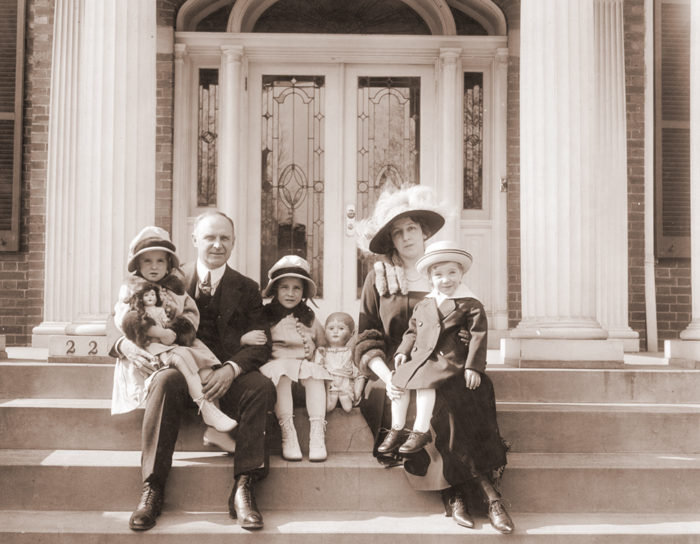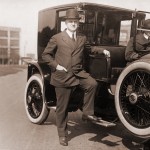

Biography
Alvan T. Fuller was born in Charlestown, Massachusetts, the son of Alvan B. and Flora (Tufts). His family moved to Malden, Massachusetts when he was a young boy and his father worked in the newspaper business. He was educated in the Malden school systems and although his formal schooling ended at age 15 he always gave credit to his home town library and church for enabling him to complete his education.
When still a teenager he started and ran a bicycle business in his home town. He was also a champion bike racer. In 1899, at the age of 21 when automobiles first began to be manufactured, he sold his racing prizes, went to Europe, bought two cars and imported them back through the Port of Boston in 1899. They were the first automobiles to be imported through the Port. In 1908, he built an automobile sales and service center at 1089 Commonwealth Avenue in Boston. It was first labeled as “Fuller’s Folly” because it was built in a swampy area a distance from downtown. It later became famous as Boston’s “automobile row”. He was very proud to be a merchant and was both a Packard and Cadillac dealer.
At 808 Commonwealth he built a building, started in 1920 and finished in 1924, to house his Cadillac dealership. As a dealer and distributor he was named the most successful automobile dealer in the world in 1920 and is credited with initiating the Washington’s Birthday auto show, which became a national sales event. He originated the idea of paying for a car over time as well as many other original sales and service techniques that form the basis of today’s marketing procedures nationwide.
As a politician he perhaps is remembered by most as the sitting Governor who refused to pardon Nicola Sacco and Bartolomeo Vanzetti who had been convicted of murdering a payroll guard during a robbery. He did so only after receiving the review recommendation that included a judge, the president of Harvard University, and the president of the Massachusetts Institute of Technology. He was a protege of Theodore Roosevelt, defeated James Michael Curley for the Massachusetts governorship and was strongly considered for the vice presidency at the 1932 Republican Convention. He never cashed a paycheck as congressman, lieutenant governor or governor. These checks, totaling over $80,000, were left to his sons as “souvenirs of my public service”.
He was a superb collector of art and among those painters represented in his collection were: Renoir, Rembrandt, Turner, Gainsborough, Sargent, Monet, Van Dyck, Romney, Boccaccino, Boucher and Reynolds. His paintings were donated to the National Gallery of Art in Washington and The Museum of Fine Arts in Boston.
His philanthropy was wide ranging and included art, hospitals, education, religion, municipalities and social services. He established the Fuller Foundation, Inc. during his lifetime. It continues to be the instrument through which many charitable agencies have benefited in the Greater Boston and Seacoast area of New Hampshire. His four children, sister, niece, and many grand and great-grand children have been involved in the Foundation and its mission.
He had a special affinity for the New Hampshire seacoast and maintained a summer residence and farm there. He took special pride in his herd of Golden Guernsey milk cows which produced milk for sale at his dairy.
He and his wife Viola loved horticulture. He built “Fuller Gardens” to honor her in North Hampton, New Hampshire. Designed in the Colonial Revival style in the early 1920’s by the noted landscape architect Arthur Shurtleff, with additions in the 1930’s by Olmsted Brothers, the gardens receive thousands of visitors each summer season and are operated by the Fuller Foundation of New Hampshire.
At his funeral at the First Baptist Church in Malden, his good friend Cardinal Richard J. Cushing said of him, “He loved his God, his country and his fellow man with an overwhelming personal love”.